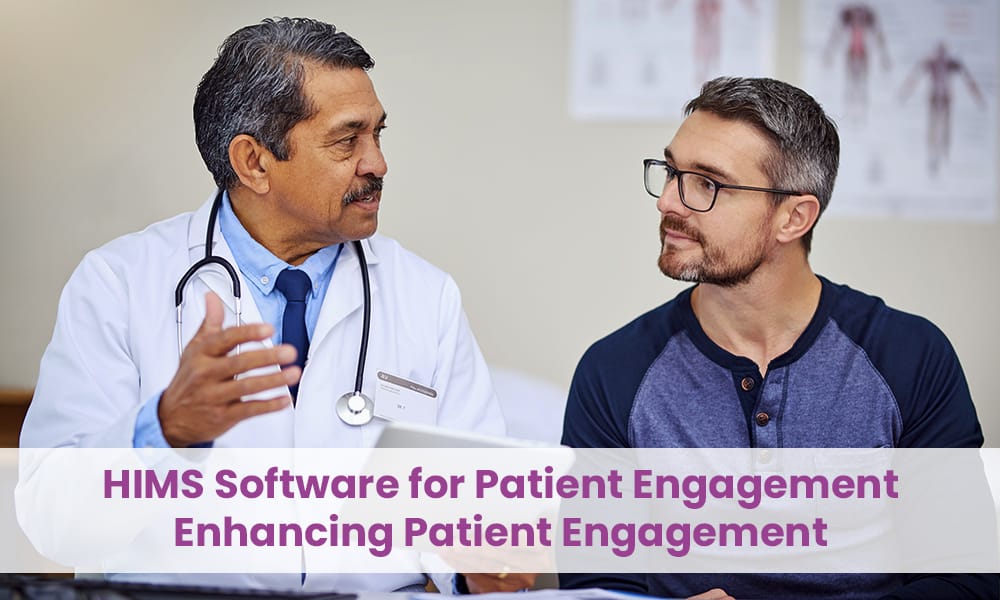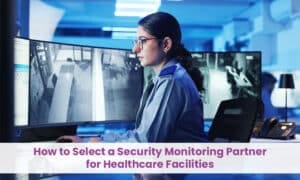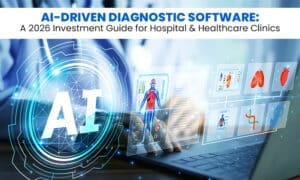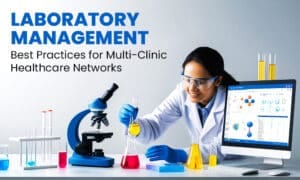
The demand for greater patient engagement is not just a trend—it is a necessity. As global hospitals and clinics aim to provide patient-centred care, digital solutions are increasingly important. Among these, a Hospital Information System (HIS) stands out as a foundational tool to transform patient interaction into a streamlined, data-driven process. Powered by innovation and precision, Healthcare Management tools now plays a key role in boosting engagement and satisfaction. This blog explores how HIMS Software for Patient Engagement can revolutionise communication, operational efficiency, and long-term loyalty in healthcare organisations.
HIMS Software for Patient Engagement: Transforming Care
A Hospital Information System (HIS) is no longer just digital storage for records. It acts as a dynamic engine to power real-time interactions between patients and providers. By centralising clinical, administrative, and financial workflows, it creates an uninterrupted care journey and ensures greater patient satisfaction.
With automated appointment scheduling and billing processes, HIS allows staff to focus more on care and less on administrative burdens. In turn, patients receive timely communication, fewer errors, and faster service—all of which are crucial for positive healthcare experiences.
Integrating Patient Engagement Tools in Healthcare IT for Real Results
Hospitals that incorporate patient engagement tools in healthcare IT gain the ability to interact with patients across multiple touchpoints. Features like digital reminders, online access to care history, and secure communication channels allow patients to stay connected and informed.
These tools, when built into a HIS, help healthcare providers manage large patient volumes without compromising personalisation or care quality.
HIMS Software for Patient Engagement: The Backbone of Patient Engagement
• Unlocking Operational Efficiency with Healthcare Management Solutions
Healthcare Management Software provides a powerful infrastructure to manage patient flow, communications, and resource allocation. It connects different departments and automates critical tasks like patient intake, charting, and appointment handling.
This software supports decision-makers with holistic views of patient data, helping them optimise workflows, eliminate bottlenecks, and elevate care delivery. Most importantly, it transforms back-end efficiency into front-line impact that patients can feel.
• Real-Time Patient Communication Using HIMS Software
Using HIMS for real-time patient updates and follow-ups allows hospitals to build trust and continuity of care. Real-time dashboards give staff immediate access to appointment statuses, lab results, and post-visit actions.
With automated reminders and progress notifications, patients are less likely to miss appointments or skip medications. These functions reduce care gaps and improve health outcomes, all while reducing the strain on medical staff.
Why AI Capabilities Are Important in an Effective HIMS Software For Patient Engagement?
AI-run HIMS software is revolutionising patient engagement by introducing intelligent automation and data-driven insights into daily healthcare operations. It doesn’t just automate routine tasks—it elevates how healthcare institutions connect with patients, manage care delivery, and ensure timely intervention.
• Predictive Patient Monitoring
AI-powered HIMS software can analyse historical and real-time data to identify patients at risk of missing appointments, defaulting on medication, or showing signs of declining health. By recognising these patterns early, the system automatically prompts staff or triggers communication with patients, allowing timely follow-ups and minimising the risk of complications or readmissions.
• Smart Scheduling and Workflow Optimisation
Beyond risk analysis, AI algorithms improve scheduling accuracy by predicting appointment durations and matching patients with the right providers at optimal times. This not only reduces wait times but also minimises scheduling conflicts and improves resource utilisation. Clinics and hospitals can now plan their day more efficiently, balancing doctor availability with patient needs.

• Enhanced Diagnostics and Decision Support
AI capabilities integrated into diagnostics allow HIMS software to flag abnormal lab results, suggest possible diagnoses, and provide evidence-based treatment recommendations. This empowers clinicians with faster and more accurate decision-making support, especially in high-volume environments where every second counts.
• Personalised Patient Communication
Another key benefit of AI-powered HIMS software is its ability to deliver tailored communication. From personalised appointment reminders to treatment-specific content, AI ensures patients receive relevant messages at the right time and through the preferred channel. This level of personalisation strengthens trust, boosts patient satisfaction, and promotes long-term engagement.
By combining automation with intelligent insights, AI-powered HIMS software bridges the gap between operational efficiency and human-centred care. It provides the strategic advantage hospitals need to stay ahead in an increasingly patient-driven healthcare ecosystem.
Driving Engagement With HIMS Software for Patient Engagement
HIMS Software for Patient Engagement plays a transformative role in redefining how healthcare providers connect with their patients. By integrating AI technologies into this software, hospitals can significantly reduce administrative workloads while simultaneously enhancing patient experience. The software becomes a smart engagement tool that adapts to patient behaviour, preferences, and clinical needs, making every interaction meaningful and relevant.
One of the core strengths of HIMS software lies in its ability to deliver data-backed, customised communication. Through AI-driven insights, hospitals can segment patients based on urgency, clinical history, and risk levels. This enables the system to prioritise communications—sending timely appointment reminders to high-risk patients, offering targeted health education materials, and initiating follow-ups for those who need continuous care. These functions ensure that no patient falls through the cracks.
Ultimately, HIMS Software for Patient Engagement empowers hospitals to move beyond reactive care. It allows them to anticipate patient needs, streamline communications, and deliver care in a way that is both efficient and empathetic. This kind of strategic patient engagement is not just a technological upgrade; it’s a competitive differentiator in today’s healthcare ecosystem.
Personalised Care Plans With HIMS: Building Long-Term Loyalty
• Delivering Value with Personalised Care Plans Through HIMS
Personalised care plans with HIMS turn healthcare into a collaborative journey between patients and providers. The software utilises historical data, current conditions, and patient preferences to generate individual care roadmaps.
Patients benefit from more targeted treatments, while providers improve clinical efficiency. These care plans reduce unnecessary tests, avoid medication errors, and promote adherence.
• Improving Engagement With Digital Touchpoints
Alerts for medications, follow-ups, and health milestones are key features of personalised care plans with HIMS. Hospitals can keep patients engaged long after they leave the facility through wellness content, feedback surveys, and ongoing digital education.
Incorporating patient engagement tools in healthcare IT within these care plans ensures that every interaction is timely, relevant, and meaningful.

Benefits of Patient Engagement Features in a Hospital Information System
A well-designed HIS comes with built-in engagement features that simplify care delivery. These include:
- Automated Alerts: Help patients stay on track with medications, appointments, and follow-ups.
- Secure Messaging Portals: Enable two-way communication between patients and providers.
- Instant Access to Results: Gives patients transparency over their health data, fostering trust.
These features increase patient confidence and reduce the dependency on manual communication, freeing up staff to focus on critical tasks.
• Improved Patient Education
Another significant benefit of patient engagement features in a Hospital Information System is enhanced patient education. Through secure portals, patients access educational resources tailored to their diagnosis, treatment plans, and post-care instructions. This encourages informed decision-making, boosts adherence, and lowers readmission rates. Patients feel more in control, resulting in greater satisfaction and a stronger relationship with their healthcare provider.
• Mobile-Responsive Communication Tools
The inclusion of mobile-responsive engagement tools within a HIS allows hospitals to meet patients where they are—on their smartphones. Push notifications, real-time alerts, and mobile-friendly appointment confirmations ensure patients stay informed without delays. This not only enhances responsiveness but also reduces errors stemming from miscommunication, ultimately improving the overall care experience.
• Operational and Financial Efficiency
These tools contribute to reduced appointment no-shows, improved billing accuracy, and consistent communication across departments and locations. By standardising patient interactions, providers improve care coordination and achieve better outcomes while enhancing their financial performance.
• Compliance and Legal Protection
Patient engagement features within HIMS Software for Patient Engagement also aid regulatory compliance. Timestamped communications, e-consent forms, and follow-up documentation simplify audits and legal reporting. This reduces the risk of penalties and legal disputes, protecting the hospital’s reputation and financial health.
• Scalability and Centralised Oversight
Hospitals using HIMS Software for Patient Engagement can efficiently scale operations without compromising service quality. Centralised dashboards, bulk communication tools, and automated workflows enable administrators to manage growing patient volumes while maintaining real-time visibility into care metrics and performance.
Leveraging Healthcare Management Software for Competitive Advantage
For healthcare organisations, Healthcare Management solutions are more than a tool—it’s a strategy enabler. It centralises operational data, supports cross-department collaboration, and drives decisions with actionable insights.
By facilitating streamlined communication and faster response times, healthcare management platforms help organisations stay responsive and agile. This directly influences patient experiences and brand reputation.
Investing in patient engagement tools in healthcare IT delivers measurable results. From increased appointment adherence to reduced customer churn, the ROI is clear. These tools also help lower administrative overhead and improve staff productivity.
By integrating such tools into existing workflows, hospitals can deliver seamless, frictionless care that meets both patient expectations and business goals.
Future-Proofing Healthcare With HIMS
Digital transformation is no longer optional in healthcare. A reliable HIS creates a strong backbone for smarter, patient-focused engagement.
Healthcare Management Software enables seamless internal collaboration and streamlines care delivery. With AI-powered HIMS software, hospitals can automate communication, improve satisfaction, and predict patient needs. Healthcare providers who prioritise patient engagement now will lead tomorrow. Embrace HIMS Software for Patient Engagement to stay competitive, future-ready, and patient-focused.





